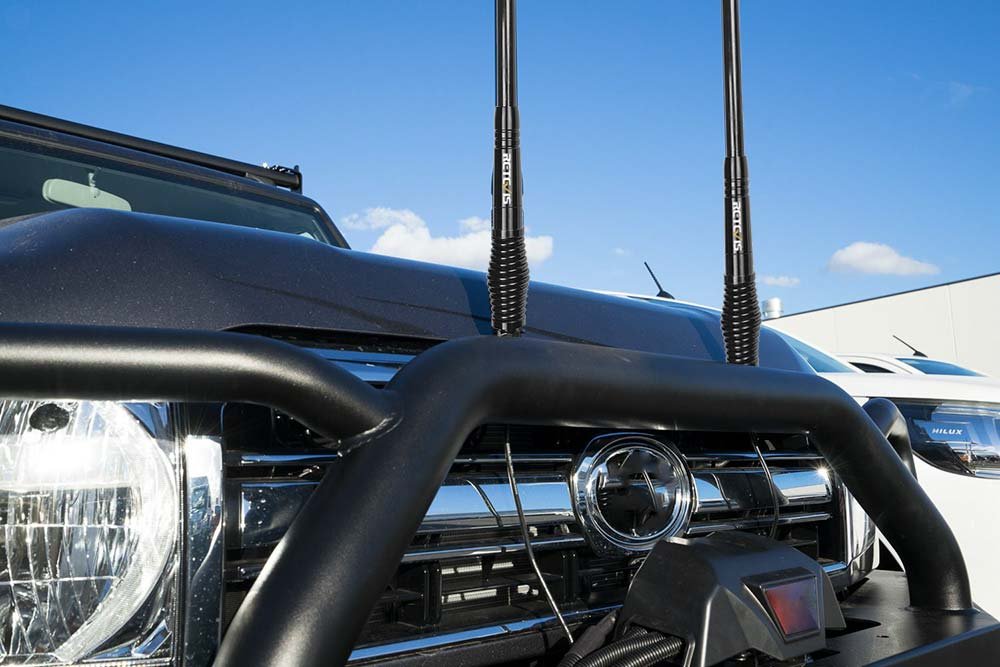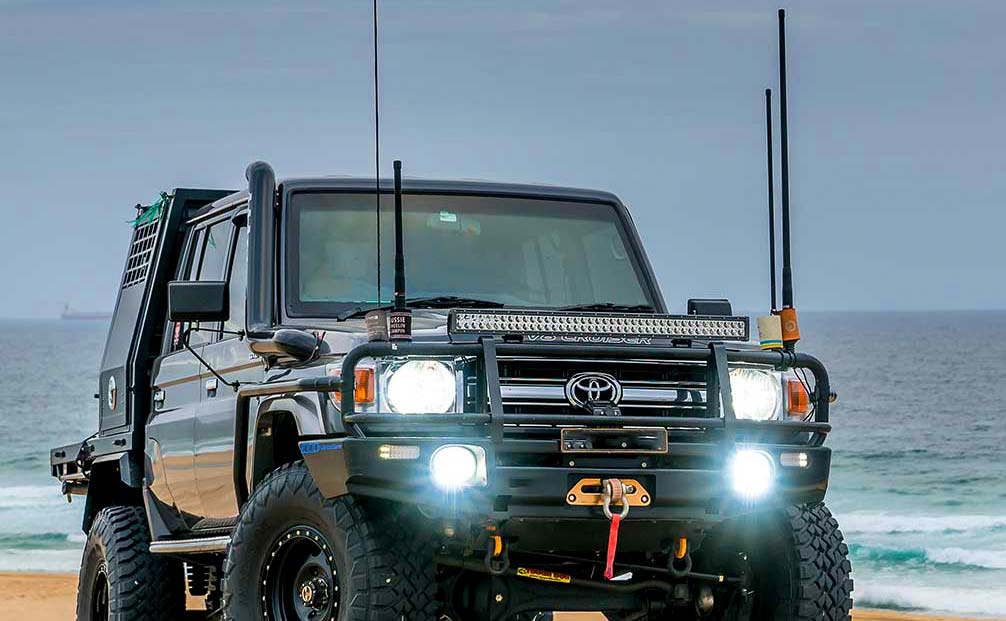GMRS Antenna is the best choice for Mobile GMRS Radio if only the GMRS band is applicable.
Importance of antennae
The antenna is one of the most critical components of a radio. It converts the radio signals into the electrical signals the radio can understand and vice versa. Without an antenna, your radio could neither receive nor transmit across any perceptible distance at all. This means the type, height, location and quality of the antenna will have a significant impact on the overall range of the radio signal.
The basic principle of antenna selection
The operating frequency band of antenna and Mobile GMRS Radio are overlapping.

Antenna Match – Antennas will radiate the signal more efficiently when they are properly tuned to the frequency that is being used by the radio. The match refers to the amount of power that is sent out by the radio compared to the amount of power that is not radiated by the antenna.
Generally, Mobile radio and antennas will have a default center operating frequency when they leave the factory. Good results can be achieved when 2 frequencies are the same. The antenna frequency is 430-480Mhz, and the center frequency will generally be 444-448Mhz. The center frequency point is the best working frequency point for the antenna function. The antenna at this point has the highest efficiency, the largest gain, and the smallest standing wave. So when choosing an antenna, it is best to choose a frequency that overlaps with the walkie-talkie.
For example, Mobile GMRS Radio works at 462.5500 MHZ, transmits 50w, the antenna covers 430-480 MHz frequency range, the center of the antenna is 454.7250 MHZ. the power from the antenna is not 50w, it will be around 43w.
The GMRS Antenna covers 462-467 MHz frequency range, which is exactly the same as the GMRS Radio band. This KIT is the most efficient.
GMRS CHANNELS AND FREQUENCIES

Dual vs Single Band Antennas
You will probably have a multi-band radio – possibly with two, maybe even three ‘main’ VHF/UHF bands that you wish to communicate on. It seems that the 2m band is the most popular ham band, closely followed by the 70cm band, although this seems to vary somewhat from region to region. The 1.25m band is a very distant third – depending on your perspective you might see value in concentrating on popular bands or unpopular bands. If you are hoping to use existing repeaters out there, you should focus most on 2m and 70cm bands, but if you want to use a band which probably has fewer other people sharing with you, then the 1.25m band may be a better choice.
One last comment about band choice. The 70cm band has a very broad range of frequencies (from 420 – 450 MHz), with a 3.5% spread above and below the central point of the band. The 2m band has only a 1.4% spread, and the 1.25m a 0.7% spread. This has some implications with antenna design – it is harder to get an antenna that works well all the way from 420 – 450 MHz than it is to get one which works well from 222 – 225 MHz.
Back to antenna issues, you can get a single antenna that is designed to work on both 2m and 70cm, and you can even get tri-band antennas that will work reasonably well on 1.25m too. This is normally the most convenient approach to adopt. But in your Mobile GMRS Radio environment, you might want to have separate antennas for each band. Indeed, as well as having separate antennas, there is a lot of good sense in having separate radios for each band too – it can make monitoring and working on multiple frequencies much easier.

If you know you’ll only be using a radio in one band, get an antenna optimized for that band. But if you want extra flexibility, then consider dual/tri band radios and dual/tri band antennas.

Views: 44

